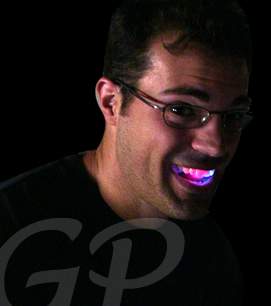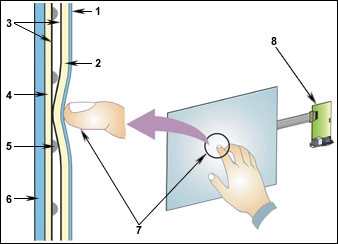An Android™ phone is a cellphone that uses the Google-developed Android™ operating system and platform. Google partnered with the High Tech Computer Corporation (HTCC) to build hardware for the G1 cellphone, the first mobile phone to run the Android™ platform. In 2008, T-Mobile premiered the G1 Android™ phone to the public.
On the technical side, an Android™ phone runs on the Android™ operating system, key applications and middleware. It's Linux kernel-based, has applications that are written in the Java language and can even run applications written in the C language. It is also a product, partly, of the Open Handset Alliance, which encourages the use and advancement of open source software for cellphones.
One of the biggest differences between a phone running the Android™ platform and others is that the software Android™ uses is a complex operating system. In contrast, the majority of operational cellphones run primitive real time applications.
In regard to its Internet capabilities, the Android™ phone uses WebKit to power the G1's Chrome Lite browser. Because WebKit also powers iPhone's Safari, the G1 is a competitor to the iPhone in terms of users' enhanced web experiences.
An Android™ phone can also run multiple applications at the same time and in the background of a phone, making multitasking easier and the functionality of the phone more fluid than other cellphones.
Android™ phones are considered revolutionary in some circles because of its open source, mobile platform. All developers, whether professional or hobbyists, are encouraged to write programs and applications for the Android™ operating system and contribute to the evolving Android™ project by submitting them to the Android™ Market. G1 users then choose to download and use the applications on their phone by accessing the application library on their handset.
Android™ offers a Software Development Kit to help developers create functional applications. While some parts of the Android™ operating system are protected under the Apache License to guard against applications that could compromise the phone's functionality, much of it is released under the General Public License which invites developers to make innovative modifications.
Comparable devices and their operating systems had before been governed by strict proprietary rules. Developers interested in inventing programs for the iPhone often encountered resistance when attempting to create iPhone programs that closely mirrored applications owned by Apple. For example, developers are prohibited from creating programs that look or act like Apple's iTunes and it's hypothetically possible for any current iPhone application developer to have his or her applications pulled from the iPhone Store if Apple chooses to compete in the same market with their version of the developer's application.
Another important distinction of the Android™ platform is that it is not tied to a specific manufacturer. Any manufacturer interested in producing its own version of an Android™ phone is welcome to use the platform for their own devices. The result could mean a large number of competing cellphone companies using Android™ to power their mobile phones and market their devices.

On the technical side, an Android™ phone runs on the Android™ operating system, key applications and middleware. It's Linux kernel-based, has applications that are written in the Java language and can even run applications written in the C language. It is also a product, partly, of the Open Handset Alliance, which encourages the use and advancement of open source software for cellphones.
One of the biggest differences between a phone running the Android™ platform and others is that the software Android™ uses is a complex operating system. In contrast, the majority of operational cellphones run primitive real time applications.
In regard to its Internet capabilities, the Android™ phone uses WebKit to power the G1's Chrome Lite browser. Because WebKit also powers iPhone's Safari, the G1 is a competitor to the iPhone in terms of users' enhanced web experiences.
An Android™ phone can also run multiple applications at the same time and in the background of a phone, making multitasking easier and the functionality of the phone more fluid than other cellphones.
Android™ phones are considered revolutionary in some circles because of its open source, mobile platform. All developers, whether professional or hobbyists, are encouraged to write programs and applications for the Android™ operating system and contribute to the evolving Android™ project by submitting them to the Android™ Market. G1 users then choose to download and use the applications on their phone by accessing the application library on their handset.
Android™ offers a Software Development Kit to help developers create functional applications. While some parts of the Android™ operating system are protected under the Apache License to guard against applications that could compromise the phone's functionality, much of it is released under the General Public License which invites developers to make innovative modifications.
Comparable devices and their operating systems had before been governed by strict proprietary rules. Developers interested in inventing programs for the iPhone often encountered resistance when attempting to create iPhone programs that closely mirrored applications owned by Apple. For example, developers are prohibited from creating programs that look or act like Apple's iTunes and it's hypothetically possible for any current iPhone application developer to have his or her applications pulled from the iPhone Store if Apple chooses to compete in the same market with their version of the developer's application.
Another important distinction of the Android™ platform is that it is not tied to a specific manufacturer. Any manufacturer interested in producing its own version of an Android™ phone is welcome to use the platform for their own devices. The result could mean a large number of competing cellphone companies using Android™ to power their mobile phones and market their devices.

























